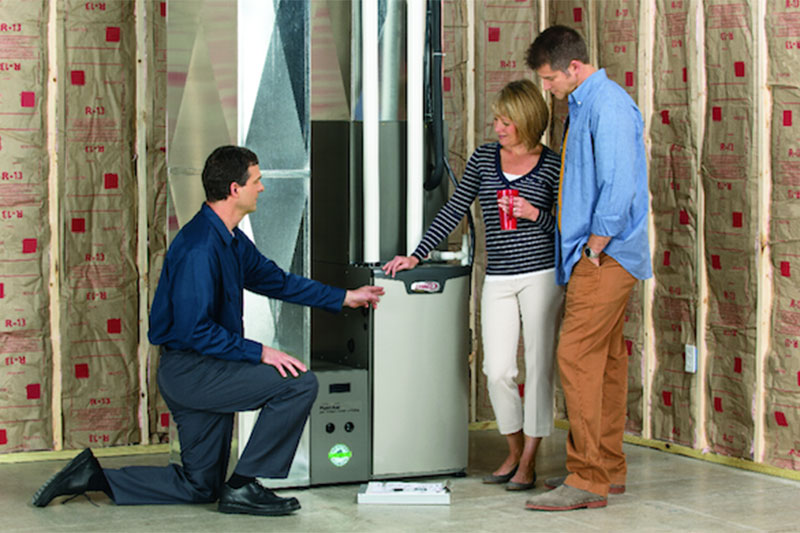
Natural gas furnaces need sufficient space and airflow to work correctly.
Your furnace can shut down if it doesn’t have enough room. It also makes it challenging for our professionals to complete furnace repair.
Regular furnace maintenance is crucial to keep your system operating trouble-free. A routinely serviced furnace may work more efficiently, which could decrease your energy expenses.
Related: How Does Furnace Maintenance Impact the Energy Efficiency of Your Home?
Maintenance often helps us discover problems before they begin. This could help reduce future repair costs and potentially lengthen the life of your furnace.
So how much area should your furnace really have?
How Much Space Will a Furnace Take Up?
If you’re finishing your basement or closing off your furnace room, you should research manufacturer specifications and Des Moines laws for clearance requirements.
As a general recommendation, your system should be 30 inches away from furnace room walls on all sides. This lets our service experts to easily repair it.
You also need to make sure the area has plentiful airflow and ventilation, especially if you have an aging furnace with a metal flue.
Related: Furnace Service or Furnace Replacement: What to Consider
This type of furnace needs combustion air from the adjacent location. If there’s not enough air, dangerous gas fumes and poisonous carbon monoxide could back draft into your home.
If your furnace is located in a small room with a gas water heater, you may need to install more openings. This could involve a fully louvered door or vents in the walls.
You don’t need to consider airflow and ventilation as much if you have a up-to-date, high-efficiency furnace with PVC piping. Your system uses one pipe as an exhaust vent and the other to add air.
Keep Combustible Materials Away from Your Furnace
Although furnace rooms double as laundry and storage space, you should keep yours free of things that could be fire hazards.
This includes:
- Clotheslines
- Cleaning or laundry products
- Gasoline, paint or paint thinner
- Rags and papers
- Wood scraps and sawdust
- Used filters
If you have a cat, situate your litter box somewhere else. Cat urine contains ammonia, which could corrode your furnace’s heat exchanger. Plus, the furnace could spread the stinky odors around your home.
You should also routinely vacuum near your furnace to prevent dust from accumulating.
Related: Is it Time for Furnace Service or Replacement?
Trust the Local Pros for Furnace Service
Whether you want furnace replacement or annual maintenance in Des Moines, Kohles & Bach Heating & Cooling can expertly handle your needs. Our highly trained technicians can fix any HVAC model or brand.
Call us at 515-278-2900 or use our online scheduler to set up an appointment now.
